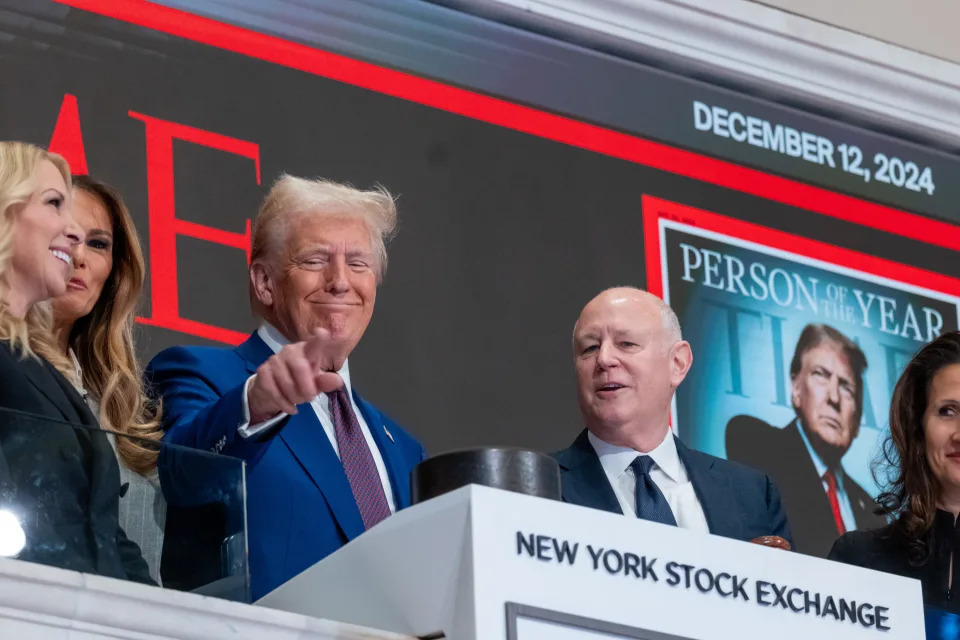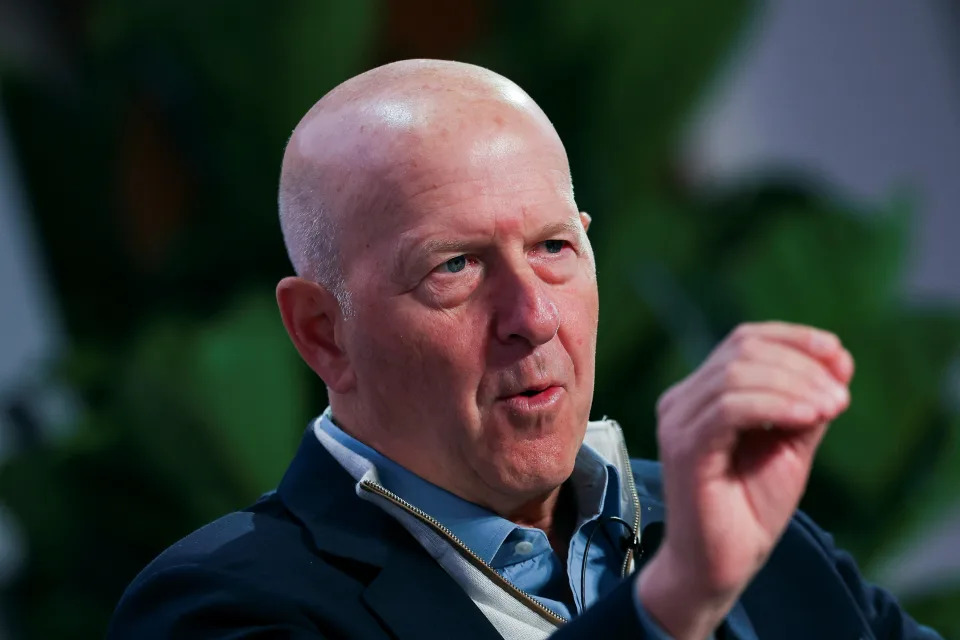The year that Wall Street got its swagger back
When Goldman Sachs ( GS ) CEO David Solomon got an invite to watch Donald Trump triumphantly ring the opening bell at the New York Stock Exchange earlier this month, there was no question he would go.
Not only was the next US president coming to Wall Street but he was giving Solomon, Citigroup ( C ) CEO Jane Fraser, and a host of other corporate executives a chance to meet and mingle with a chunk of his cabinet nominees on the trading floor.
Minutes ahead of Trump’s bell ringing, the crowd broke into a cheer: "U-S-A, U-S-A."
Solomon and other big bank bosses certainly have a lot to cheer about as 2024 comes to an end.

Dealmaking and trading are surging, interest rates are considerably lower than they were a year ago, and the prospect of looser banking rules feels possible with a new Republican administration about to take over the White House. Bonuses are also expected to be up once checks are cut in the new year.
No bank is better positioned to take advantage of this shift than Goldman, which relies heavily on the Wall Street-centric businesses of investment banking, trading, and wealth management. Its stock has surged since the election of Trump, and over the past 12 months it is up 50%.
But it’s not the only bank surging higher. Since the election, the stocks of JPMorgan Chase ( JPM ) and Bank of America ( BAC ), Citigroup, Wells Fargo ( WFC ), and Morgan Stanley ( MS ) have risen between 5% and 12% as of Friday.

“A lot of bankers, they’re like dancing in the street,” JPMorgan Chase CEO Jamie Dimon said days after Trump won the election.
JPMorgan, the nation’s biggest bank, is among those having a great year. Analysts expect the bank to break another record for highest profits in US banking history. Investment banking revenue is expected to be up 45% in the fourth quarter.
The hope is this current rally could be just the beginning of a bull run banks haven’t seen in over a generation .
Some predict 2025 will be a repeat of 1995, when bank stocks surged after Federal Reserve rate cuts, a soft landing engineered by then-central bank Chair Alan Greenspan and a deregulation stance taken by then-President Bill Clinton.
A federal law signed by Clinton in 1994 eliminated restrictions that stopped banks from opening branches across state lines, setting the stage for a period of consolidation that would eventually give rise to coast-to-coast empires amassed by JPMorgan Chase, Wells Fargo, Bank of America, and Citigroup.
In 1995, an index tracking the banking sector finished up more than 40%, outperforming the S&P 500 (GSCP) . That outperformance would hold for two more years.
The current year rivals 1995 for investor exuberance. The KBW Bank index ( ^BKX ) has thus far climbed 32%, outperforming major stock indexes.
To keep the party going, "election optimism will need to translate into bank revenue," Barclays analyst Jason Goldberg told Yahoo Finance.
“The market is pricing in a further pickup, so that is certainly something to be mindful of," he added.
One hopeful sign is that investment banking is up this year, ending a two-year-long drought.
Investment banking revenue in 2024 is on pace to be third highest in the last decade, according to Dealogic data as of Dec. 17.
Activity levels remain slightly below the 10-year historical average, which includes a breakout year in 2021, but Solomon predicts this will change next year with more deals in the pipeline and an easier M&A approval process in Washington.
"In 2025, we'll certainly be at 10-year averages. We might be ahead of 10-year averages," Solomon said at a Reuters conference this month.
The big prize for banks would be if the incoming Republican administration took a hatchet to big bank overseers, as well as their rules and regulations.
What banks are hoping above all is that a new administration would loosen a new set of controversial capital rules proposed by top bank regulators that would require lenders to set aside greater buffers for future losses.

The requirements are based on an international set of capital requirements known as Basel III imposed in the decade following the 2008 financial crisis.
Banks have been fighting this US proposal for the last year in an aggressive public campaign and even dropped hints about suing regulators if they don’t get their way.
They won a big victory in September when some regulators said they would water down those requirements.
Bankers expect the new administration to revisit the rules again. If the stance of the previous Trump administration is any guide, the new round of capital hikes could range anywhere from the current 9% to "no increases," Barclays' Goldberg added.
There are still plenty of uncertainties that could upend bank stocks. Some economists are concerned that Trump's wider economic agenda of raising tariffs, lowering taxes, and deporting undocumented immigrants could add to inflationary pressures and keep interest rates higher.
That, in turn, could make life more difficult for bank borrowers and raise funding costs for lenders.
But bank investors like their odds. As do the bankers.
Bank of America CEO Brian Moynihan told Yahoo Finance last month at the Invest conference that he’s confident in the US economy under Trump’s leadership and expects the administration to "hit the ground running."
David Hollerith is a senior reporter for Yahoo Finance covering banking, crypto, and other areas in finance.

